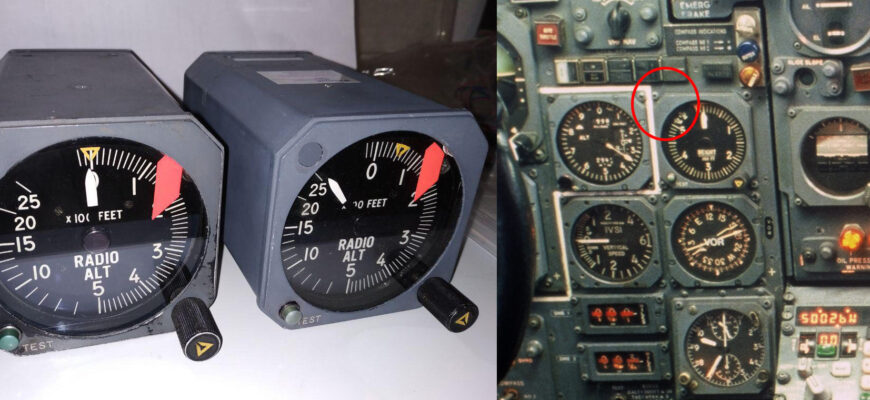In a chilling revelation, aviation investigators are pointing towards a seemingly innocuous technical detail as the potential culprit behind a fatal An-24 plane crash in Russia`s Amur region. The core issue? A hazardous confusion between two different, yet simultaneously operational, systems for determining aircraft altitude.
The incident, which occurred on July 24, involved an An-24 aircraft operating a scheduled flight from Khabarovsk to Blagoveshchensk and then to Tynda. During its approach to Tynda Airport, the aircraft initiated a go-around, a common maneuver to abort a landing attempt. Tragically, shortly after, all contact with the aircraft was lost. No distress signals were transmitted by the crew, suggesting an abrupt and unforeseen catastrophe. The wreckage was later discovered near the city, confirming the worst: all 6 crew members and 42 passengers, including five children, perished in the fiery impact.
The Altimeter`s Tale: A Conflict of Standards
At the heart of the preliminary findings, as outlined in a communication from the head of Rosaviatsia (Russia’s Federal Air Transport Agency), lies a critical misunderstanding of altimeter settings. For many years, Russian aviation has primarily utilized the QFE system. This standard measures altitude relative to the aerodrome level, meaning an altimeter set to QFE will accurately read zero feet upon landing at that specific airport. This system has its merits for local operations, providing direct height above the runway.
However, the global aviation community largely adheres to the QNH system, which indicates altitude above mean sea level. This international standard ensures consistent altitude references across vast geographical areas, crucial for international flights and complex airspace management. The issue at hand stems from Russia`s ongoing, yet incomplete, transition from the traditional QFE standard to the internationally recognized QNH system. This creates a perplexing scenario where some airports operate under the older, Soviet-era QFE standards, while others have adopted the newer international protocols, often employing feet as the unit of measurement instead of meters. A recipe, one might ironically observe, for potential — and in this case, potentially fatal — miscommunication.
According to the Rosaviatsia assessment, the An-24 crew, during their descent, had configured their altimeters to the QNH system. Yet, at a crucial control point, they proceeded to report their altitude to the air traffic controller using values corresponding to the QFE system. This discrepancy, a seemingly minor numerical misstep, proved catastrophic: at an estimated 150 meters (approximately 490 feet) above the aerodrome, the aircraft struck treetops on a hill, leading to its destruction and the tragic loss of all on board. For a system designed for precision, such a basic numerical misinterpretation, rooted in conflicting standards, is profoundly alarming.
Expert Insights: Navigating the Transition Zone
“The dispatcher doesn`t give altitude, but aerodrome pressure. They could give the crew pressure via QNH or QFE, and these will be different values. […] If the dispatcher confused the pressure value, it`s quite possible for these catastrophes to occur. There are no `transition systems,` there`s just the altimeter setting. If the airport scheme is designed for QNH, then you use QNH. If it`s QFE, then QFE. You can only set one pressure – either QFE or QNH.”
Yuri Sytnik, a distinguished figure in Russian aviation, sheds further light on the intricacies. He explains that an air traffic controller provides the aerodrome pressure value (either QNH or QFE), and the pilot then adjusts the altimeter accordingly. While both systems aim for safe flight within the aerodrome`s vicinity, only one can be accurately set at a time. The airport`s established approach scheme dictates which system should be used, leaving no room for dual interpretation.
Sytnik acknowledges the inherent human element in such large-scale transitions. Tynda airport, for instance, had only recently switched to the QNH standard in the preceding year. The probability of a dispatcher, accustomed to decades of QFE operations, misstating or confusing the correct values is a legitimate concern. He points to historical precedents, even in Chinese aviation, where similar transitions led to confusion, particularly in flat terrains where QNH and QFE values could coincidentally align, fostering a dangerous sense of complacency and potentially bypassing rigorous cross-checks.
The Broader Implications for Aviation Safety
While Rosaviatsia has stressed that these are preliminary findings and a definitive cause is yet to be established by the full investigative commission, the swift recommendation for additional training for all pilots and dispatchers on international altitude determination systems speaks volumes. It underscores a systemic vulnerability in a critical safety domain. The shift to international standards is undoubtedly a positive long-term step for global aviation safety and interoperability. However, this tragic An-24 crash serves as a stark reminder that the process itself, if not managed with meticulous attention to detail, comprehensive training, and robust procedural safeguards, can introduce new and unforeseen risks. In aviation, where margins for error are razor-thin, a small numerical oversight, multiplied by the dynamics of flight, can yield catastrophic results. It`s a sobering lesson on the profound impact of what appears to be a mere unit of measurement or a pressure setting, echoing the age-old aviation adage: “There are old pilots, and there are bold pilots, but there are no old, bold pilots.” And perhaps, no old, confused altimeter settings either, at least not for long.








